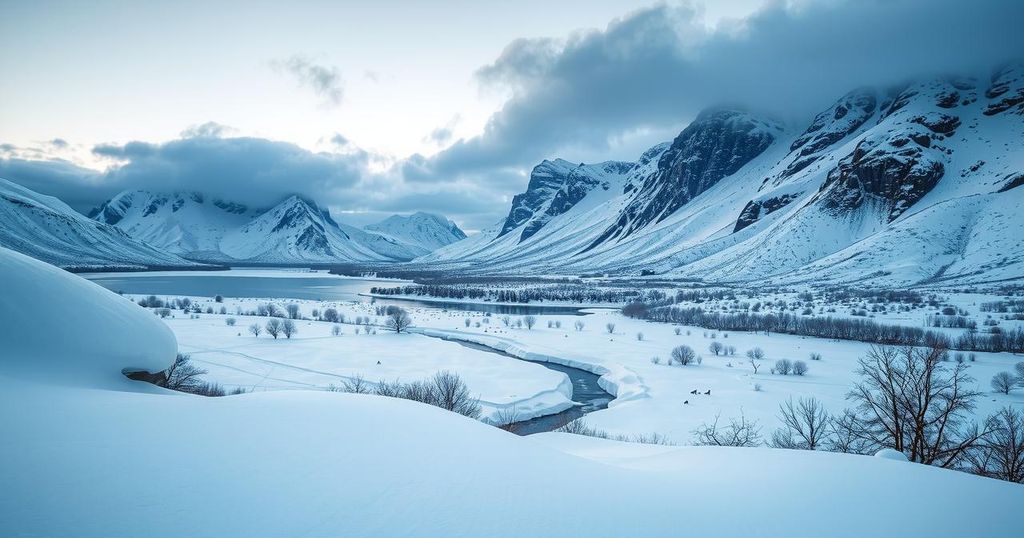The New Year has brought an Arctic cold outbreak affecting Eastern Canada and the eastern United States, with temperatures plunging significantly below seasonal averages. Regions like Philadelphia are expected to record historically low temperatures. The phenomenon stems from Siberian air masses, marking a notable climatic shift that requires public attention and awareness of potential risks associated with severe cold snaps.
The commencement of the New Year ushers in an Arctic cold front across North America, particularly impacting Eastern Canada and parts of the United States. According to the U.S. National Weather Service and the Climate Prediction Center, this significant temperature drop results from an Arctic outbreak originating from Siberian air masses. Meteorologist Brian Proctor of Environment Canada describes this phenomenon as an ‘Arctic blast,’ which indicates a notable shift in atmospheric conditions that can result in considerable chilling effects across the regions affected.
Currently, areas within the Kitikmeot region are experiencing extreme cold, with temperatures plummeting below -30 degrees Celsius and wind chills potentially reaching -50 degrees Celsius. Iqaluit, a locale that recently enjoyed relatively mild weather, anticipates a temperature decrease to -17 degrees Celsius on January 8. This trend of declining temperatures is evident across Eastern Canada, where the mercury fell from -1 degrees Celsius on January 2 to a high of -11 degrees Celsius by January 5. Although these temperatures are not severely low compared to extremes experienced historically, they still signify a notable change.
Conversely, the eastern United States faces more perilous conditions, with temperatures expected to drop significantly below seasonal norms. Philadelphia will likely witness temperatures fall to below -17 degrees Celsius for the first time in this century, while Washington, D.C., records similar lows not seen since 2019. The weather pattern is predicted to moderate slightly toward the end of the subsequent week, suggesting a potential relief from the severe cold.
While Arctic outbreaks are commonplace during this season, the notable cold spell of January 2019 serves as a stark reminder of their potential dangers. That event led to more than 20 fatalities and extensive flight disruptions due to perilous wind chills that dipped below -49 degrees Celsius. History thus underscores the significant risks posed by such climatic phenomena during winter months.
The article addresses the current weather phenomena affecting North America, particularly focusing on an Arctic outbreak of cold air. This phenomenon is characterized by a significant drop in temperatures resulting from Arctic air masses migrating southward from Siberia, impacting both Canada and the United States. Understanding the implications of such weather patterns is crucial, especially considering the historical context of previous Arctic outbreaks that led to extreme cold and associated risks, including human fatalities and operational disruptions.
In summary, the New Year has heralded a formidable Arctic cold spell impacting both Eastern Canada and the United States. This atmospheric event, driven by air masses from Siberia, exemplifies the drastic temperature fluctuations typical of winter months. While such outbreaks are not unusual, their associated dangers warrant serious attention, given the historical instances of severe impacts on human life and transportation. As temperatures are projected to rise towards the end of the upcoming week, the immediate focus remains on weather conditions and public safety.
Original Source: nunatsiaq.com






